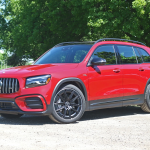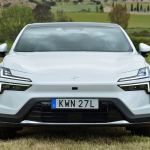Buick first introduced the Verano for the 2012 model year before the Mercedes-Benz CLA 250 and Audi A3 sedans reached showrooms. At the time it only had to fight for market share with the Acura ILX, which was a lukewarm product at best.
But Acura upgraded the TLX this year with a revised powertrain and fresh styling. The Verano can still outshine it with an available turbocharged engine that offers more power, but even that model is less attractive beside the A3 and CLA 250 that are both packaged with turbocharged four pots as well.
Forget-Me-Nots
Buick certainly hasn’t made any pivotal changes to the Verano since its introduction, but it throws in the 4G LTE wireless hotspot capability that GM added to its other vehicles for this year. There are a couple of new paint colors and appearance packages but unless you’re one of the assembly line workers in Michigan’s Orion Township where they are made, you probably won’t notice the differences.
See Also: 2016 Acura ILX Review
Long before Germany’s aforementioned “affordable” products arrived, critics praised the Verano as an unlikely, but favorable alternative to entry-level Acura ownership. The standard 2.4-liter naturally aspirated four-cylinder isn’t much of a powerhouse, but it still offered more power than the base ILX and it’s a Buick, which means you could probably argue your way into a screaming deal because, well, it’s a Buick.
In some ways, that’s actually a good thing. For better or worse, most Buicks end up selling to people in China so it’s no wonder that there doesn’t seem to be any real strategy in place to revitalize the brand image with Americans.
Meanwhile the turbocharged model is still sitting quietly in dealer lots with a little red “T” on its decklid. As a reminder, it makes 250 hp and 260 lb-ft of torque. That means it is still by far the most powerful among its peer group and best of all, it’s available with either a six-speed automatic or a manual with as many ratios.
Soft Suspension, Smooth Power Delivery
Everything else aside, the combination of a six-speed manual mated to a turbocharged direct injection four-cylinder might make it tempting to assume the Verano is sporty. It isn’t. Buick doesn’t publish the sales split between manual and automatic transmissions, but I imagine most sell with a slushbox.
The steering is light and the MacPherson strut front suspension in the Verano feels spongy during hard corners. Here’s the thing: that’s good. Really good. The Verano would be awful with a stiff suspension and what little it might gain in handling would be far from enough to make it a performance machine.
Instead, it sticks to what Buick does best: comfortable cruising. The 2.0-liter turbo can chirp the front tires easily from a dead stop, but that almost means it’s robust enough to offer comfortable highway acceleration.
Comfortable Seats, Regrettable Interior Materials
That’s a comforting feeling because even if the Verano doesn’t feel like it’s sticking to the ground, you still get a sense that it can scoot quickly to wherever you want to be without breaking a sweat.
But that isn’t the only strong point because the seats are designed to be soft and comfortable, which is something they deliver successfully. The leather Buick uses to upholster them isn’t anything special, but it feels soft enough to avoid seeming cheap.

The center stack is also hopelessly cluttered with buttons that call for a long acclimation period. For example, I still needed to hunt for the right button after spending a week with the car. At least the “Intellilink” infortainment system is straightforward to use.
Interior space is another advantage the Verano has over its most direct competitors. Like its platform-sharing sibling, the Cruze, the Verano sits on the large side of its segment. That means it offers a reasonably spacious rear seat with 34.7 inches of rear seat legroom, which represents an extra 0.7 inches than the Acura ILX. It also comes with 14.3 cubic feet of cargo space, which his more generous than anything else in the segment. Then again, the interior is upholstered with materials that are less appealing to touch than what you would find in an Acura, Mercedes-Benz or Audi.
The Verdict:
The advantages Buick’s turbocharged compact sedan had when it first arrived on the market are less poignant than they were a couple of years ago. It still offers more power than its competitors, but the gap isn’t as pronounced as it once was. Nevertheless, it offers a generous equipment list and a comfortable ride at a much more palatable price than the Germans. If acceleration is your primary concern, this is still a car worth considering. Otherwise, the 2016 ILX is probably a better choice.












